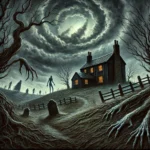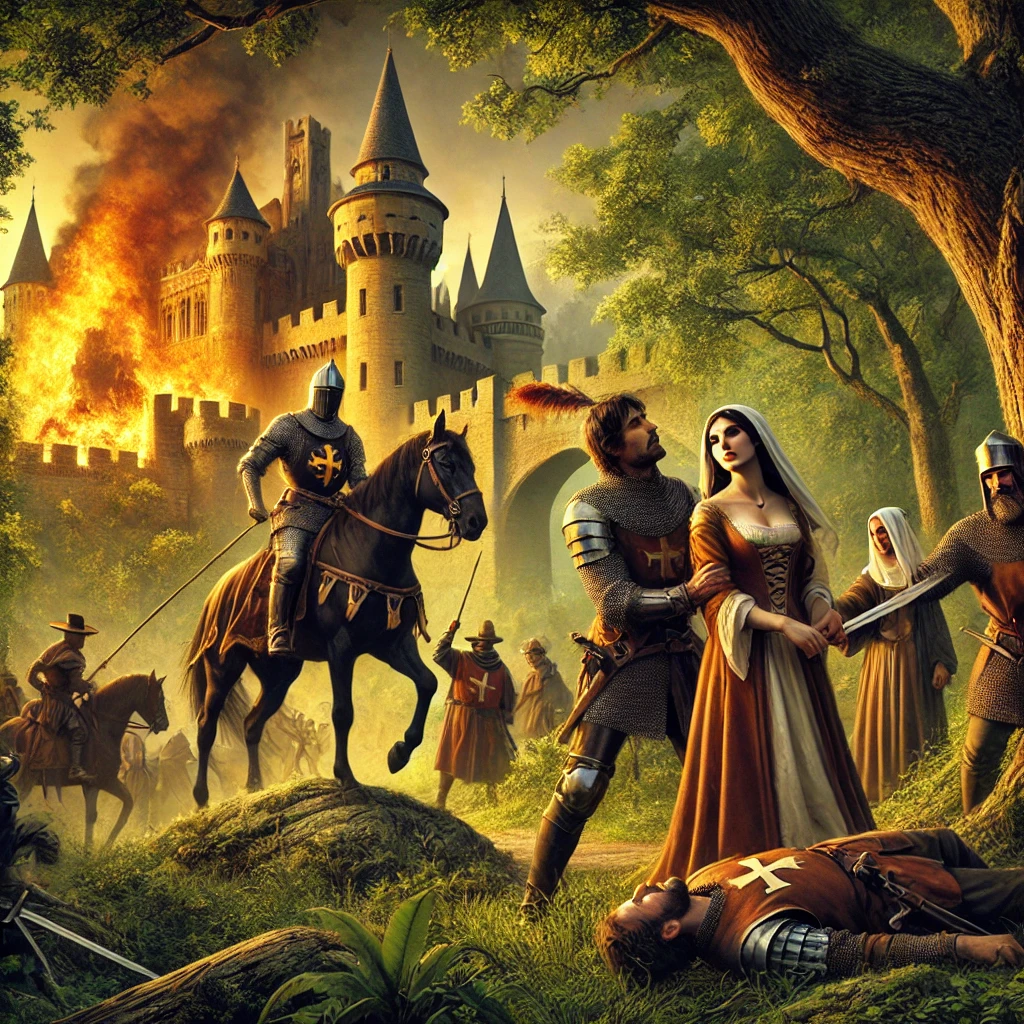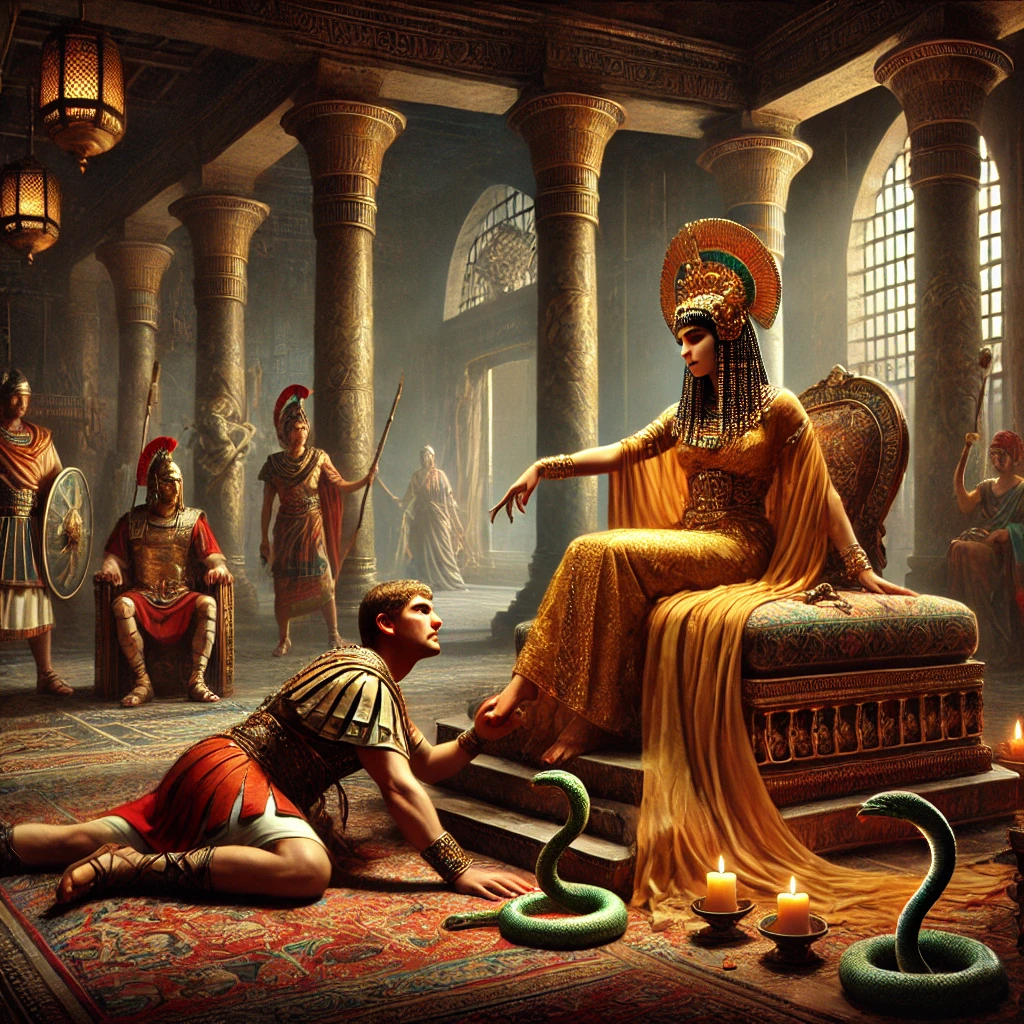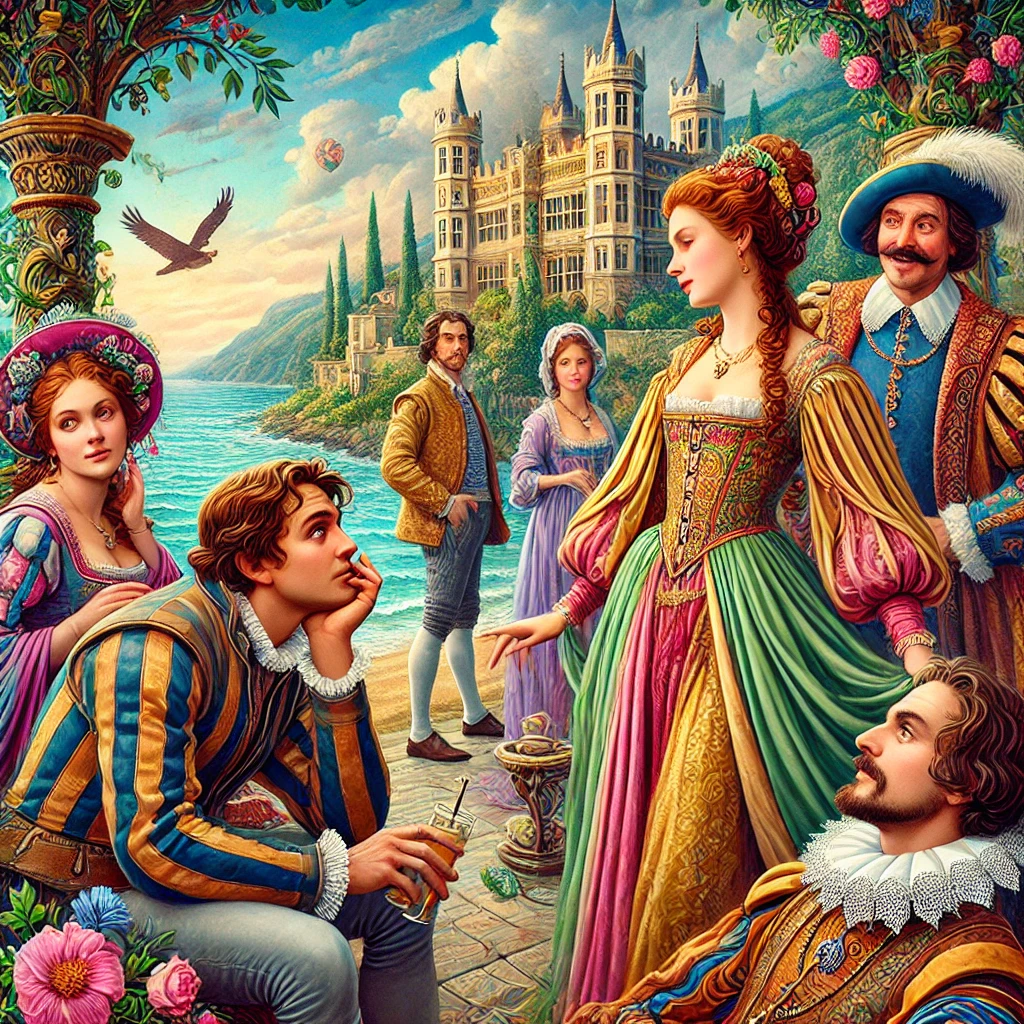The Great Gatsby by F. Scott Fitzgerald was published in 1925 and is considered one of the defining novels of the Jazz Age. The story, set in the summer of 1922, explores themes of wealth, class, love, and the American Dream. Narrated by Nick Carraway, it follows the enigmatic Jay Gatsby and his obsessive love for Daisy Buchanan. Through the lens of the extravagant parties at Gatsby’s mansion and his attempts to rekindle a romance with Daisy, the novel critiques the moral decay behind the glamour of the Roaring Twenties.
Plot Summary
Nick Carraway, a young man from the Midwest, moves to West Egg, a fashionable yet less prestigious part of Long Island, in the hopes of beginning a new chapter in his life as a bond salesman. He rents a small, modest home that sits next to a grandiose mansion owned by the mysterious and wealthy Jay Gatsby, a man known for hosting extravagant parties that draw the social elite of New York. Night after night, Gatsby’s mansion is filled with music, laughter, and revelry, though the host himself remains an enigma to his guests. Across the bay, in the more aristocratic East Egg, live Nick’s cousin Daisy Buchanan and her husband Tom, who comes from old money and possesses an air of entitlement and arrogance.
Nick reconnects with Daisy and meets her domineering husband, Tom. The Buchanan marriage is far from happy. Daisy, a beautiful but shallow woman, is restless and seems trapped in a loveless marriage. Tom, on the other hand, is openly unfaithful, carrying on a brazen affair with Myrtle Wilson, the wife of a mechanic from the working-class “valley of ashes,” a bleak and desolate industrial area between West Egg and New York City. Despite his wealth and privilege, Tom embodies the moral decay that pervades the novel, careless in his actions and dismissive of the people around him.
At Tom’s insistence, Nick accompanies him to the valley of ashes, where he is introduced to Myrtle, Tom’s mistress. Myrtle, dissatisfied with her life and her marriage to George Wilson, aspires to a world of wealth and luxury, and her relationship with Tom provides her a temporary escape from her dreary existence. Overlooking this desolate wasteland are the fading eyes of Dr. T. J. Eckleburg, a massive, weathered billboard that looms like a forgotten god, silently observing the moral decay and suffering below. However, the affair is built on inequality and selfishness, underscoring the broader theme of class divisions and the consequences of reckless behavior.
One day, Nick receives a formal invitation to one of Gatsby’s legendary parties, something rare among Gatsby’s usual crowd of uninvited attendees. The party is a spectacle of excess, filled with celebrities, glittering lights, and endless alcohol, but Nick finds himself feeling out of place amidst the chaos. He soon meets Gatsby, a strikingly charismatic yet elusive figure, who confides in Nick that his wealth and social status are all part of an elaborate plan to win back Daisy, the woman he has loved since before the war. Gatsby’s love for Daisy is obsessive and idealistic; it’s revealed that the two had a brief but intense romance during World War I, but Daisy, unwilling to wait for Gatsby, married Tom instead.
Gatsby’s wealth and lavish lifestyle are all in service of this singular dream: to reunite with Daisy and recreate the love they once shared. Through their mutual friend Jordan Baker, a cynical and ambitious golfer, Nick learns more about Gatsby’s past and his carefully orchestrated rise to wealth. Gatsby asks Nick to arrange a reunion with Daisy, and Nick agrees. The reunion, held at Nick’s small house, is awkward at first, but the connection between Gatsby and Daisy reignites. Gatsby believes that Daisy will leave Tom for him, convinced that their love can erase the years and transcend her marriage.
As the summer progresses, the tension between Gatsby, Tom, and Daisy reaches a boiling point. During a sweltering afternoon in New York City, the group gathers at the Plaza Hotel, where Gatsby confronts Tom and demands that Daisy declare she never loved him. Tom retaliates by revealing the truth about Gatsby’s criminal background, exposing the illegal dealings behind Gatsby’s fortune. Caught between Gatsby’s idealism and Tom’s power, Daisy crumbles. She cannot bring herself to fully reject Tom or the life of comfort and security he provides, and Gatsby’s dream begins to unravel.
On the drive back to East Egg, Daisy, behind the wheel of Gatsby’s car, accidentally strikes and kills Myrtle Wilson, who had run into the road after a heated argument with her husband. Daisy speeds away, leaving Gatsby to take the blame for the accident. Devastated by his wife’s death, George Wilson, believing that the car belonged to Gatsby, seeks revenge. He tracks down Gatsby at his mansion and shoots him while Gatsby floats in his pool, his dream shattered and unfulfilled. George then turns the gun on himself.
In the aftermath, Daisy and Tom retreat into their insulated world of wealth and privilege, abandoning Gatsby and the chaos they helped create. Nick is left to manage Gatsby’s funeral, but few people show up. The lavish parties that once filled Gatsby’s mansion are forgotten, and the people who once enjoyed his hospitality vanish, revealing the hollowness of the connections Gatsby had forged. Even Daisy, the woman Gatsby dedicated his life to, does not come to pay her respects.
Disillusioned with the East Coast and the moral decay he witnessed, Nick returns to the Midwest, reflecting on the events of the summer and their broader implications. He comes to see Gatsby not just as a man consumed by love for Daisy, but as a symbol of the American Dream itself: a dream of self-made success, of reinventing oneself, and of attaining an ideal that always seems within reach but is ultimately unattainable. Despite Gatsby’s flaws and the illegal means by which he gained his fortune, Nick views him as the only truly genuine person he encountered in the East, a man who believed in something greater than himself, even as it led to his destruction.
In the end, Nick stands on Gatsby’s lawn one last time, staring at the green light across the bay, which once represented Gatsby’s hope for a future with Daisy. Now, that light symbolizes the unattainable—the loss of innocence and the crushing reality of dreams that can never be fulfilled. Gatsby’s life and death serve as a poignant reflection on the illusions that drive people and the harsh truths that lie beneath the surface of the American Dream.
Main Characters
Nick Carraway: The novel’s narrator, Nick is a Yale graduate from the Midwest who moves to New York to learn the bond business. He is thoughtful, honest, and a good listener, which makes him a confidant to other characters. Over the course of the novel, Nick becomes disillusioned with the East Coast elite and its shallow values.
Jay Gatsby: The mysterious and wealthy protagonist, Gatsby is known for his lavish parties and undying love for Daisy Buchanan. His real background is obscured by rumors, but it is revealed that he came from humble beginnings and made his fortune through questionable means, all in a bid to win back Daisy, his lost love.
Daisy Buchanan: Nick’s cousin and Gatsby’s love interest, Daisy is married to Tom Buchanan. She is beautiful and charming, yet shallow and careless, representing the unattainable ideal that Gatsby spends his life chasing. Daisy’s indecisiveness and desire for comfort ultimately lead to Gatsby’s downfall.
Tom Buchanan: Daisy’s wealthy, arrogant, and aggressive husband. He is openly unfaithful to Daisy, having an affair with Myrtle Wilson, and represents the entitled, morally corrupt old-money elite. Tom’s racism and belief in his own superiority are reflected in his conversations with Nick and others.
Jordan Baker: A professional golfer and Daisy’s friend, Jordan is cynical, self-centered, and represents the modern woman of the 1920s. She becomes romantically involved with Nick, though their relationship lacks depth.
Myrtle Wilson: Tom Buchanan’s lover, Myrtle is married to George Wilson, a mechanic. Myrtle is desperate to improve her social status and escape her life with George, which leads her to pursue an affair with Tom. Her tragic end serves as a pivotal point in the story.
George Wilson: Myrtle’s husband, a working-class man who owns a garage in the “valley of ashes.” George is deeply in love with Myrtle and devastated by her affair, which eventually leads him to seek revenge against Gatsby, whom he mistakenly believes is responsible for Myrtle’s death.
Theme
The American Dream: One of the central themes of The Great Gatsby is the critique of the American Dream. Gatsby’s rise from poverty to immense wealth represents the American Dream, but the novel shows how this dream is corrupted by materialism and the pursuit of wealth at any cost. Gatsby’s dream of a perfect future with Daisy is ultimately unattainable, symbolizing the illusion of the American Dream.
Class and Social Status: The novel portrays the rigid social stratification of the time, focusing on the distinction between “old money” (represented by Tom and Daisy) and “new money” (represented by Gatsby). While Gatsby is wealthy, he can never fully integrate into the world of the old-money elite. The “valley of ashes” also serves as a stark reminder of the vast gap between the rich and the poor.
Love and Obsession: Gatsby’s love for Daisy is central to the plot, but it is an idealized, obsessive love based on a version of Daisy that no longer exists. This unattainable dream drives Gatsby’s actions, and his failure to grasp the reality of Daisy’s shallow nature leads to his tragic end.
Moral Decay: Beneath the glittering surface of wealth and luxury, the novel explores the moral decay of society. Characters like Tom, Daisy, and Jordan represent the carelessness and lack of responsibility among the rich, while Gatsby’s illegal activities show the darker side of the pursuit of success. The novel questions the values of a society obsessed with wealth and status.
The Green Light: A powerful symbol in the novel, the green light at the end of Daisy’s dock represents Gatsby’s hopes and dreams for the future. It is a symbol of everything he yearns for but can never attain, representing the unreachable goals of the American Dream.
Writing Style and Tone
Fitzgerald’s writing style in The Great Gatsby is often described as lyrical, poetic, and deeply symbolic. His use of vivid imagery brings the setting and characters to life, especially in his descriptions of Gatsby’s extravagant parties and the contrasting bleakness of the “valley of ashes.” Fitzgerald’s prose is filled with metaphors and symbols, most notably the green light, the eyes of Dr. T. J. Eckleburg, and the color motifs (such as the gold and yellow representing wealth and decay). The narrative moves fluidly between realism and a dreamlike quality, reflecting Gatsby’s illusions and the disillusionment of the Jazz Age.
The tone of the novel is both romantic and cynical. Through Nick’s reflective and often detached narration, Fitzgerald captures the allure of the wealthy, glamorous world of the East Egg elite while simultaneously critiquing its hollowness and moral emptiness. The novel’s tone grows increasingly melancholic as Gatsby’s dream unravels, and the destructive forces of greed, class division, and carelessness become evident. The juxtaposition of beauty and decay underscores the novel’s central themes, leaving readers with a sense of tragic inevitability.
We hope this summary has sparked your interest and would appreciate you following Celsius 233 on social media:
There’s a treasure trove of other fascinating book summaries waiting for you. Check out our collection of stories that inspire, thrill, and provoke thought, just like this one by checking out the Book Shelf or the Library
Remember, while our summaries capture the essence, they can never replace the full experience of reading the book. If this summary intrigued you, consider diving into the complete story – buy the book and immerse yourself in the author’s original work.
If you want to request a book summary, click here.
When Saurabh is not working/watching football/reading books/traveling, you can reach him via Twitter/X, LinkedIn, or Threads
Restart reading!








